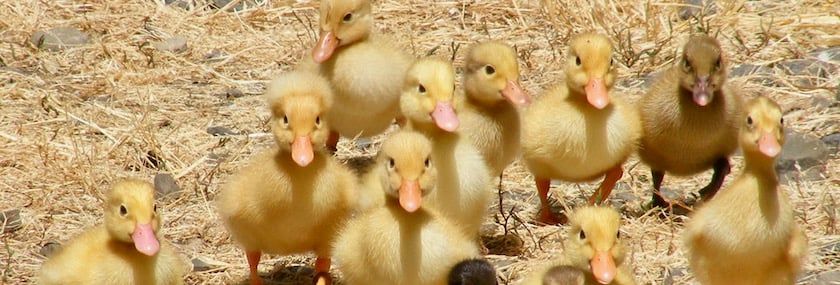Which Duck Breed is Best for You?
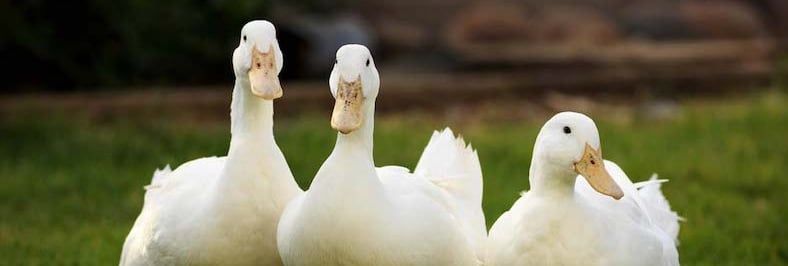

As a lifelong duck breeder, I’ve learned a thing or two about different duck breeds, so let me offer some pointers to chicken-keepers when choosing a breed.
Keep in mind, however, that all the different breeds of ducks have much more in common than differences. They all love to swim and play in water, they all love to patrol for slugs and snails, they all lay delicious, rich eggs, they all are very disease resistant, and they are all fun to watch as they go about their daily life.
If this is what you want then any breed of duck will work for you. If, however, you have certain needs or wants, then let’s see if we can help.
So, what do you want in a duck?
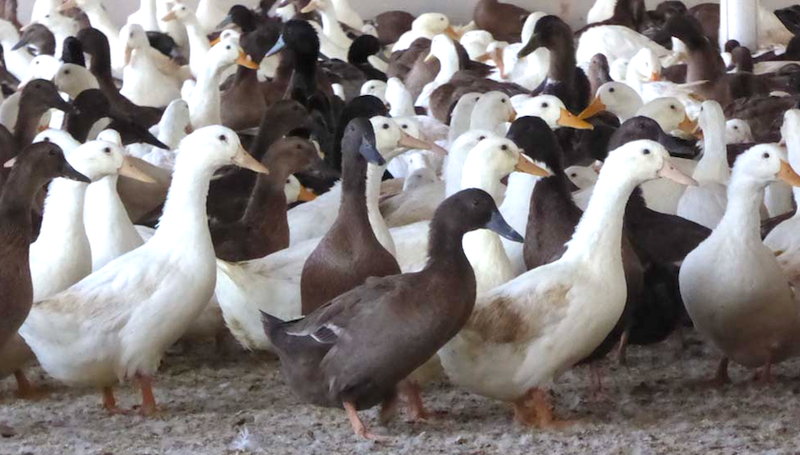
Great egg layers
This is easy. You want Khaki Campbells or a strain bred for egg production. We have developed the Golden 300 and White Layer exactly for this purpose. These birds will lay as well as the best chicken and sometimes surpass them. The eggs are larger than chicken eggs and richer in protein, vitamins, and minerals per ounce than chicken eggs.
Even if you are a seasoned chicken-keeper, these breeds will amaze you with their year-round egg production.
Calmest ducks
To answer this, we asked our team members that care for our ducks on a daily basis. These are the people that are with the birds every day—collecting eggs, spreading bedding, feeding, etc.
Each of them ranked the most nervous breed as a 10 and the calmest as a 1 and then graded all breeds from 1 to 10. We averaged their scores and you can see the results in the attached table.
Breed Temperament
Muscovy 1
Saxony 1
Silver Appleyard 1.2
Welsh Harlequin 1.3
Black Swedish 2.3
Blue Swedish 3
Buff 3
Black Runner 3.5
Blue Runner 4
Chocolate Runner 4.3
Rouen 4.5
Mallard 5
Jumbo Pekin 5.5
Pekin 5.5
White Layer 6.7
Fawn & White Runner 7.5
Golden 300 7.7
Cayuga 8.8
Khaki Campbell 9
White Crested 9
1 is extremely calm - 10 is more nervous
So in our flocks, the breeds that exhibit serious “chill” around humans include the Muscovy, Saxony, Silver Appleyard, and Welsh Harlequin. It is important to keep in mind that these are averages for large flocks.
Small flocks have a different dynamic and are typically calmer than large flocks, especially if they are around people much of the time.

In addition, there is a great variability in personality of birds within a breed. I know there are very calm, loving White Crested or Khaki Campbell ducks out there that their owners feel are the very best, calmest duck ever.
Ability to escape from predators
The only breed we have that can quickly become airborne is the Mallard. If you cannot shut your birds in at night for protection and must rely on the protection of a pond, then Mallards are your answer. They will start flying at about 10 weeks and be excellent flyers by 15 weeks.
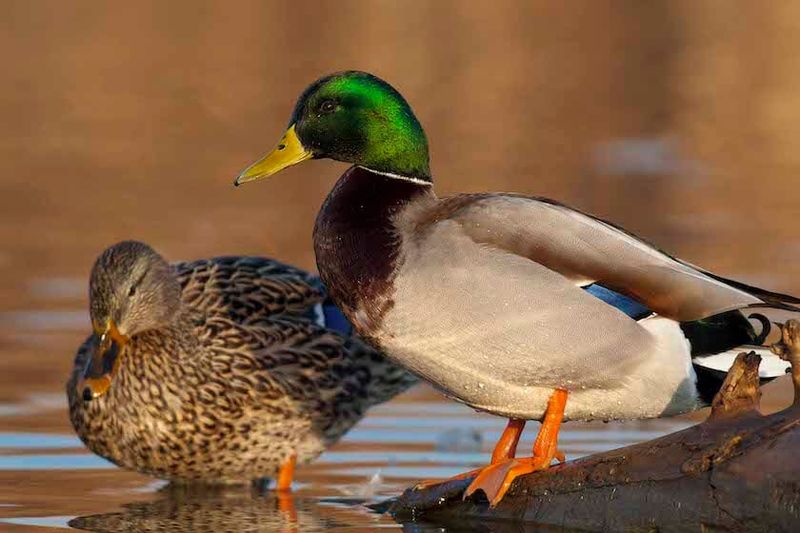
Of course any wild, flying duck such as a Wood or Mandarin duck meets this criteria, but are often difficult to find. Muscovy fly but are not particularly quick in their movements and I don’t see them escaping a predator as readily as a Mallard.
Great mothers
Muscovy ducks on the other hand, are excellent at hatching and raising several broods of ducklings every year. Other breeds can do it but the Muscovy is the best by far. Provide her a safe place to have a nest, good food, clean water, and a mate and she will the do the rest for you.
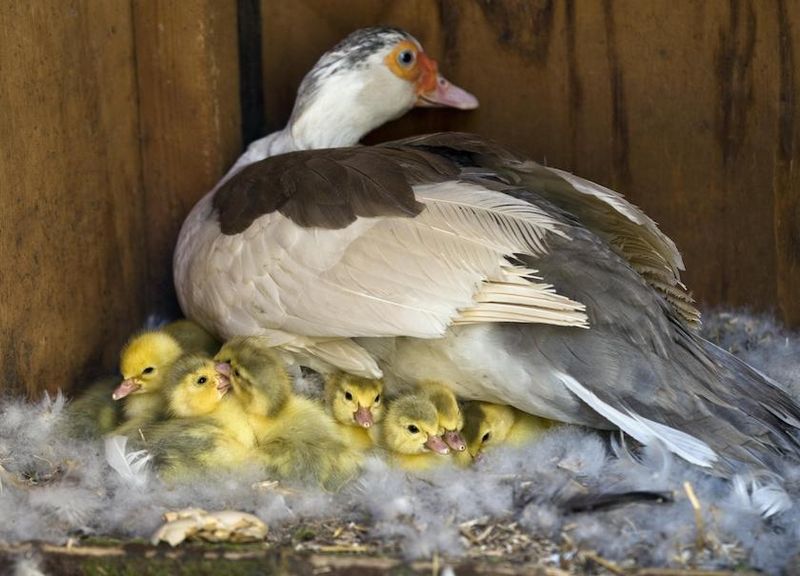
Rare breeds
You want to help preserve a rare breed of duck? The Livestock Conservancy uses a poultry census to determine which breeds are gaining or losing in population…and some are downright rare.
The breeds in the two most critical categories include the Hookbill and Ayelsbury in the Critical category and the Buff, Saxony, Silver Appleyard, and Magpie in the Threatened category. Choose any of these, and you help save a breed from extinction.
Meat production
This is easy. It is either the Pekin or Muscovy. Over 95% of the commercially-grown meat ducks in the world are Pekin. They grow quickly (seven pounds live in seven weeks or less), are very feed efficient (it doesn’t take much feed for every pound they grow), lay quite a few eggs under the correct management….and are white-feathered for a cleaner carcass.
Muscovy are very popular in France as they have a leaner carcass with the males producing a very large breast. They are not as reproductive as Pekins, however, and typically cost more because of that.
Quietest
As a breed, Muscovy again win this category. They do not have the loud QUACK that other female ducks have. It is more of a hissing sound. You want quiet ducks but don’t want Muscovy? Get males. Surprisingly, they are much quieter than the females—they also have a unique raspy, squeaky voice.
Show quality
All breeds are shown at exhibitions and fairs. Yes, some breeds, such as Call ducks, are more popular than other breeds but being successful showing in 4-H or FFA or as an adult has more to do with the quality of the birds you select than the breed.
Train herding dogs
Did you know ducks are used to train young herding dogs? These dogs are trained on ducks before they graduate to sheep or cattle. You want a flock that stays together during the training and does not naturally split into many different groups.
In our experience, it is typically Runner ducks or male Golden 300 ducks that prove the best for this purpose.
Multi-purpose
This description is often given to a breed that lays quite a few eggs but can also be processed for meat. If someone asks us for this we usually recommend they get two different breeds—one for eggs for several years and the other to process in seven weeks. But if you really want a breed that can do both, we recommend the Buff. They are a good layer, are larger than many other breeds and can produce a very clean carcass due to their white underfeathers.
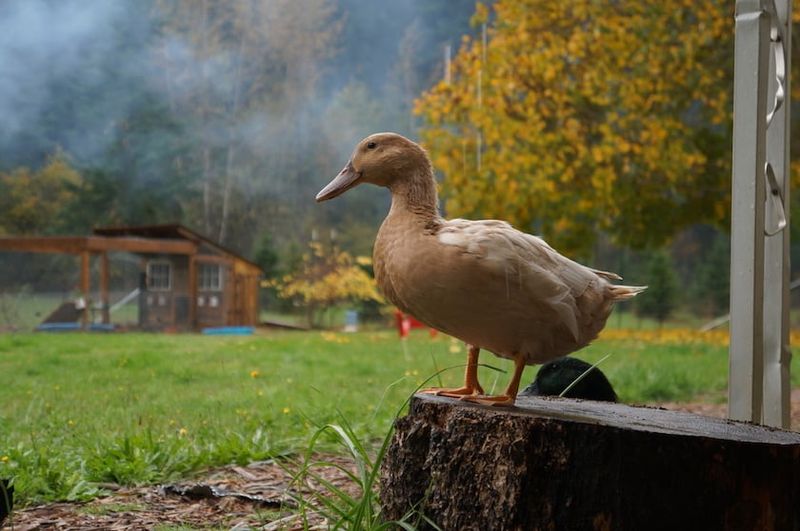
Beauty and appearance
This category is about as subjective as you can get. Obviously I can’t tell you what will strike your fancy. A flock of white Pekins on a lake? A group of animated, active (and some say comical) Runners? The striking colors of a male Wood or Mandarin duck? The beetle green sheen on a Cayuga duck? The beauty of a Buff duck in an orange sunset? Every duck is beautiful in its own way.
It all depends on which ones strike your fancy.

If you can’t easily decide
You don’t have to only get one breed—they all get along. Instead of choosing only one breed, get several different breeds. It is much easier to tell them apart and then you can name each one. Later you can decide if you like one breed over another. And remember, you can always get more, different breeds later.
Click HERE to see an in depth breed comparison table.
Tags:Alternative Flock

Chicken Whisperer is part of the Catalyst Communications Network publication family.








